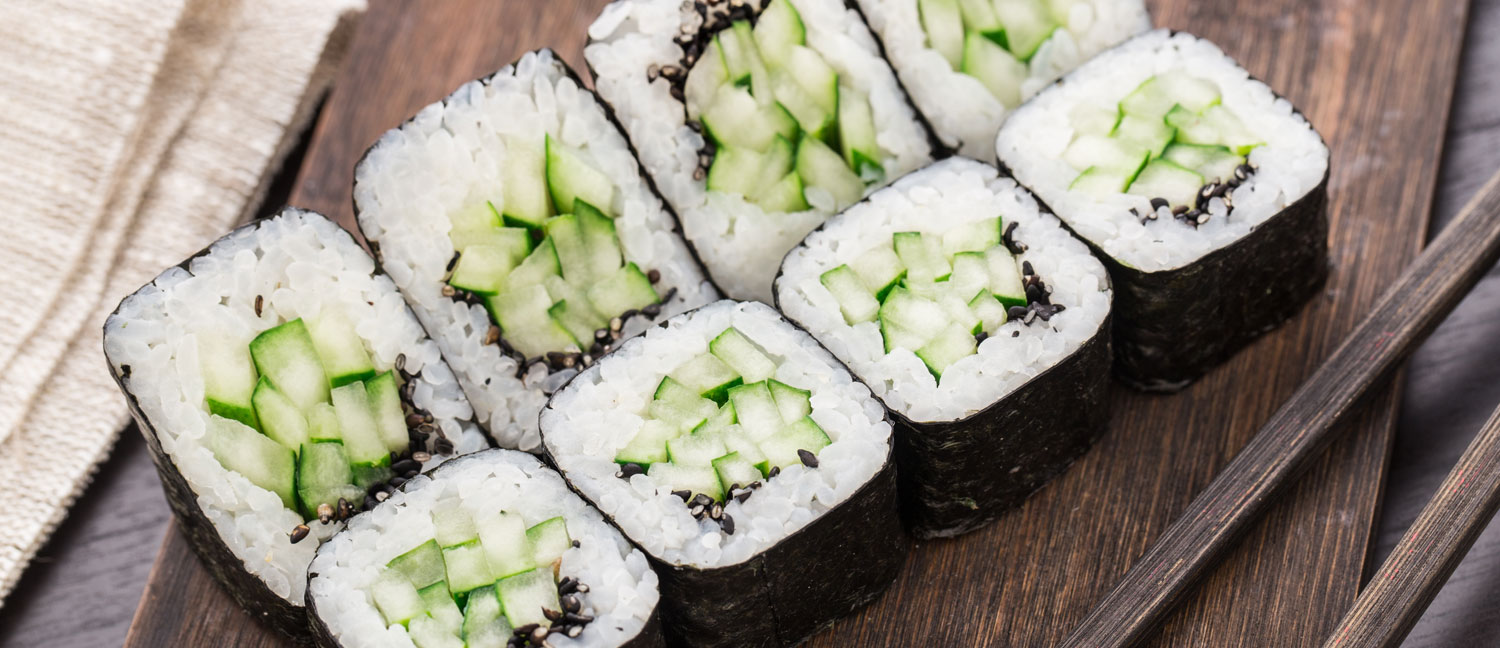[vc_row row_type=”row” use_row_as_full_screen_section=”no” type=”full_width” text_align=”left” css_animation=”” box_shadow_on_row=”no”][vc_column][vc_column_text]A few weeks ago, I wrote a few articles on tips to nourish your thyroid and other ideas to help balance your weight naturally. Please visit my web site at www.janetmckee.com to read past articles if you missed them. In these articles, I mentioned the benefits of including sea vegetables in your diet to nourish your thyroid and boost your metabolism. Well, of course I am a huge fan of EARTH grown vegetables, but including some veggies from the SEA is an incredibly powerful thing to try for optimum health and vitality.
What are sea vegetables?
Sea vegetables are exactly what the name implies, they are vegetables from the sea. These include names such as nori, dulse, kombu, kelp, wakame, arame, hijiki and more. They are harvested from the sea, dried and packaged for our use and benefit.
Where do you find these?
You can find packages of various types of sea vegetables in the Asian section of any health food store, or you may purchase these online. They are readily available and easy to find.
Why are sea vegetables so good for us?
Sea vegetables are rich in minerals and the best source of iodine, a nutrient which is critical for a healthy, well-nourished thyroid. Sea vegetables are also such a great source of iron. In fact, Dr. Policano has stated that, “kelp has four times the iron of beef!” Or, just read the back package of dulse and you will see: vitamin A, vitamin C, calcium, iron, riboflavin, vitamin B6, potassium, protein, vitamin B12, magnesium, phosphorous, iodine and chromium!
What do I do with them?
There are so many wonderful things you can do with sea vegetables to include them in your diet in a delicious way.
- Dulse, which is a dark reddish brown seaweed, can be eaten straight out of the bag, so don’t hesitate to put a bit on top of a salad, add to a sandwich or wrap, or sprinkle on top of any cooked veggie or soup. It is a bit salty but some love just to munch on a bit right out of the bag.
- Nori can also be eaten directly from the package. The most common way to eat nori, which is a flat delicate sheet of green seaweed, is in the form of a sushi nori roll. I love to just pull things out of my fridge and make a fresh nori roll and have it as a snack or lunch. Please see my recipe book titled, “Fabulous Recipes for Vibrant Health” available at local health food stores or on my site at www.janetmckee.com for great vegetable nori roll ideas. It is also sold sometimes in small strips that can be put on top of any salad or soup etc…
- Kombu is wonderful to add minerals to soup stocks or used to improve the digestibility of beans and grains. Just include some when cooking these foods. It should be soaked or cooked in the liquids you are using. It will soften and expand but can be chopped into small pieces and included in any soup or stew.
- Wakame is wonderful in any soup. It should be soaked first and then added to the pot when cooking. You may also soak wakame and then include it in a salad or side dish.
- Arame and hijiki are often soaked and then included in side dishes and salads.
One of my favorite ways to include sea vegetables in a nourishing dish is to make miso soup. Miso is a fermented soy bean paste that is extremely healing for the digestive system and is so delicious. See my miso soup recipe in the book “Fabulous Recipes for Vibrant Health” to include mineralizing and nourishing kombu, wakame, and medicinal mushrooms such as shiitake. So many healing foods all in one great dish![/vc_column_text][/vc_column][/vc_row]

